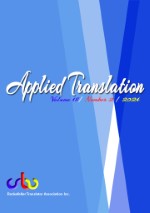How language barriers and translation processes affect international communication
Keywords:
Cross-cultural understanding, Cultural nuance, Diplomatic communication, Language accuracy, Language barriers, Misinterpretation, Translation challengesAbstract
Language barriers and translation processes significantly influence international communication by affecting clarity, understanding, and efficiency. When individuals or organizations from different linguistic backgrounds interact, differences in language can lead to misunderstandings, misinterpretations, and loss of nuance. Translation processes aim to bridge these gaps but are often imperfect due to cultural differences, idiomatic expressions, and contextual nuances that may not have direct equivalents in other languages. This can result in distorted messages, reduced trust, and communication breakdowns. Additionally, reliance on translation tools or interpreters introduces potential errors and delays, impacting the timeliness and accuracy of information exchange. Overall, overcoming language barriers is crucial for effective international collaboration, requiring careful translation, cultural sensitivity, and sometimes multilingual communication strategies.
References
Al-Amer, R., Ramjan, L., Glew, P., Darwish, M., & Salamonson, Y. (2016). Language translation challenges with Arabic speakers participating in qualitative research studies. International journal of nursing studies, 54, 150-157. https://doi.org/10.1016/j.ijnurstu.2015.04.010
Botha, G. R., & Barnard, E. (2012). Factors that affect the accuracy of text-based language identification. Computer Speech & Language, 26(5), 307-320. https://doi.org/10.1016/j.csl.2012.01.004
Mshvenieradze, T. (2014). Dialogizmi, Polyphonia da Intertextualuroba Politika Discourse. Tbilisi
Omiadze, S. (2006). Structure, Semantics and Functioning of Linguocultural Components of Georgian Discourse. Doctoral Dissertation. Arnold Chikobava Institute of Linguistics. Tbilisi;
Omiadze, S. (2009). Disk’ursis Definatiata Analizi. Tbilisi.
Shadiev, R., & Huang, Y. M. (2016). Facilitating cross-cultural understanding with learning activities supported by speech-to-text recognition and computer-aided translation. Computers & Education, 98, 130-141. https://doi.org/10.1016/j.compedu.2016.03.013
Published
How to Cite
Issue
Section
Copyright (c) 2025 Madona Kebadze, Eka Kobiashvili, Lia Baindurashvili

This work is licensed under a Creative Commons Attribution 4.0 International License.










